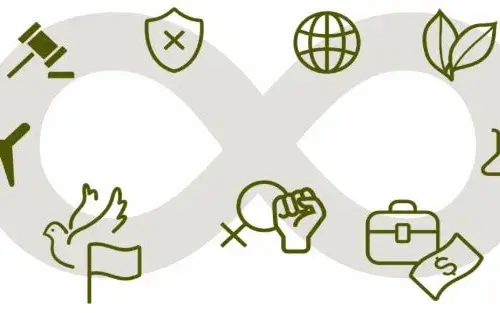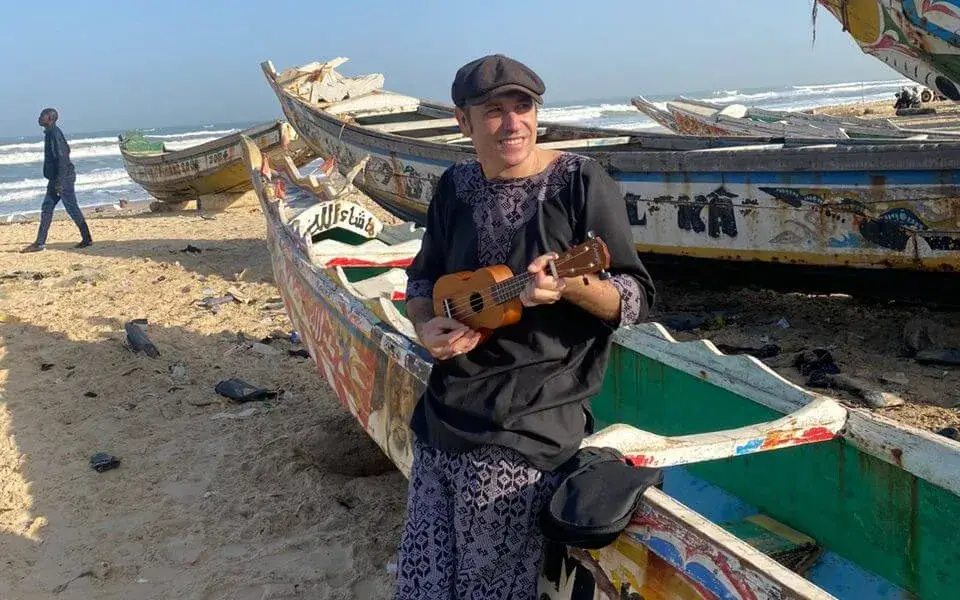The participation of children and young people as holders of the human right to work must be always guaranteed
Entities that work with children and youth, and especially those that are dedicated to education in leisure time, are a very suitable space to address complex issues with children. That is why it is interesting that the people in charge take advantage of their spaces to deal with issues of social justice, global, and human rights, both from a more general perspective, and with a specific vision based on the participation of children.
Aware of this, Escoltes Catalans produced the guide 'With the right to transform: guide to promote educational projects for global justice'. The objective of the document is to contribute to articulating the participation of youth and children in their neighborhoods and towns to collectively strengthen social cohesion around gender and human rights approaches.
Before you start thinking about how to work with global justice in education, you need to know what exactly global justice is. This very broad concept is based on the idea that the world is not fair, and the dynamics of power must be turned around. From here, however, the definition of 'justice', as such, must arise from each entity, in joint work with the children, thus encouraging their participation from the beginning of the project, and at the same time maintaining coherence with ongoing activities and values, which turns this discussion into political action. Education for global justice, therefore, will emerge from the projects that are carried out in this regard. To improve the transformative capacity of these initiatives, it is best to plan them in medium or long-term projects. They will have to be well planned, according to pedagogical objectives, so the activities will have to be prepared following a structure and jointly with children and young people.
Contextualitzation
The next step is to analyze the context of the entity and see which oppressions take place, which rights are violated, in order to work on them through educational actions. Here it is advisable to choose only one of the violated rights to reflect on, especially the one where the most can be affected from the entity's action framework. Some examples are the right to participation or the right to quality education.
Once the right has been chosen, it will be necessary to research the legal framework that protects it at local and international level (Declaration of Human Rights, Children's Rights, European Charter for the Safeguarding of Human Rights in the city...). It will also be necessary to indicate who are the holders of these rights, always in an intersectional key.
In relation to this, it is also important to identify the primary actors, and if it can be with first and last names, even better. Changes in institutions happen through people. For this reason, it will be necessary to focus on interviewing people with a medium or high level of influence, and on those people who are already rather close, or at least neutral, to the proposals.
In this process of contextualization, it will be necessary to identify those issues that are structural in the violations of rights, especially with regard to gender. It will be necessary to see how this device impacts the project that is to be carried out, in the entity, in its groups of children or young people, and in the territory in general, and to see how the actions can reproduce gender roles and how stop doing it It is important that an intersectional perspective is maintained throughout the process, in order to see in which ways the violation of rights is more pronounced in some groups than in others.
To finish this analysis task, you will have to keep in mind what resources and ability to influence the entity has. It's about having a realistic vision and checking the feasibility of the project, as well as protecting yourself against possible vulnerabilities and having alternatives. Here you also need to take into account the possibilities of communication that will take place throughout the project, essential to guarantee transparency and improve impact.
General and specific objectives
Once the group has thought about which right has been violated and how, it is time to define the objectives of the action. These must be able to be written in short and concise sentences. It can also be interesting to separate the objectives into general and specific ones.
With the definition of the objectives it would also be advisable to define the expected results, that is to say, what is expected of the project, what results must be achieved for it to be successful... They must refer to issues such as respect, guarantee and the protection of the right to defend; the reduction of gender inequalities; the empowerment of rights holders and the promotion of their advocacy capacities; and the participation of these people, as well as vulnerable groups and actors and holders of obligations.
Evaluation indicators
When defining the objectives, it will also help to establish the evaluation indicators, which will allow you to know whether the expected results have been achieved once the project is finished. It will be interesting to do this with the people who hold the rights, which in the case of entities dedicated to childhood, youth or leisure education will surely be children or teenagers. It is most recommended that the indicators can be calculated with numbers.
Making this definition is a political action. Deciding what is evaluated and what is not involves indicating what is most relevant to the project. This is why it is necessary to think about the key indicators of the Gender and Human Rights-Based Approach, and always do so together with the children and adolescents who will participate in the activities.
It will also be necessary to verify that these indicators effectively measure whether the holders of the obligations are respecting, protecting and guaranteeing the right, the process of empowering the persons holding the right, and the degree of their participation throughout the project.
Programming of activities
After all the preliminary preparation has been done, it is time to plan the activities of the educational project. The idea is to think about the results you want to get before you schedule the actions. On the contrary, the conclusions of the project will not be effective or long-lasting.
An example of an area of action that can be addressed from leisure education entities to educate and at the same time influence global justice are the protest actions led by the people who hold the rights, that is to say children, girls, teenagers and young people. You can choose to make a mural on the walls of the organization, a song in the town square, produce a short...
To be taken into account
There are other issues that need to be taken into account when carrying out global justice education projects, and they have to do with consistency. It is necessary for the group involved to be clear about the roles of each one, and to establish a coordination team where the people who hold the rights are represented, in order not to reproduce the discrimination that is being fought against.
This involves establishing mechanisms for democratic and equal participation throughout the project so that vulnerable groups play an active role. It will also be necessary to define ways to constantly monitor the actions, and to foresee spaces for care and conflict management, as well as to communicate the progress to the people involved in the project.
Evaluation of the results
Once the activities are finished, to finish the project, it is time to evaluate the results. This will be rather simple as you will only need to follow the indicators. The evaluation, however, must follow the same requirements as the other phases: the participation of the rights holders, the defense of the violated right, the desire to transform the power relations outside and inside the entity.







Add new comment